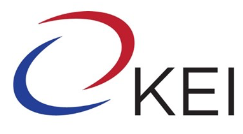2007 Posts located
Asia
2007 Posts located
Korea and Japan are two key allies of the United States in East Asia. These two countries are “window models” of postwar democratization and economic advancement in a free world.…
May 25, 2011
On 19 October 1983 in Kim Jong-il’s office at the Central Party Building in Pyongyang, a private conversation took place between Kim and two South Korean filmmakers: director Shin Sang-ok…
May 25, 2011
The world can only hope the recent U.S.-North Korean bilateral discussions will revive the six-power talks and lead to Pyongyang’s renunciation of its nuclear weapons ambitions. Hope, however, is not…
May 25, 2011
This paper builds on Kiyota and Stern (2007), in which we analyzed the economic effects of a U.S.-Korea free trade agreement (KORUSFTA). In Section II, we review the objectives and…
May 25, 2011
Hello again after the holiday break! Just before the holidays I spoke with Hawon Lee, who was just wrapping up his nearly four years as Washington D.C. Bureau Chief of…
January 21, 2011
In this episode we speak with Mr. Ken E. Gause, currently a senior research analyst with the International Affairs Group and Iranian Studies Program at CNA Strategic Studies in Alexandria,…
December 15, 2010
In this episode, we are joined by Balbina Hwang, currently a visiting professor at Georgetown University and the National Defense University here in D.C. Ms. Hwang is here to speak…
November 18, 2010
This episode takes us directly into the office of Ambassador Han Duk-Soo, Ambassador of the Republic of Korea to the United States, who shares his thoughts on the much-anticipated G-20…
November 4, 2010
This is the second piece in a series looking at how the issues identified in KEI’s annual “10 Issues to Watch for on the Korean Peninsula” series and other issues of note developed in 2022. The original “10 Issues” piece can be found here. As we enter the new year, Korea-Japan relations seemed poised for a…
December 20, 2022
This is the first piece in a series looking at how the issues identified in KEI’s annual “10 Issues to Watch for on the Korean Peninsula” series and other issues of note developed in 2022. The original “10 Issues” piece can be found here. Even before the pandemic little information was provided by the North Korean…
December 19, 2022
Since the mid-2000s, successive U.S. and South Korean administrations have touted the transformation of the ROK-U.S. alliance. They often highlight how a once asymmetric, Cold War alliance, rooted in strong military and security ties and shared sacrifice during the Korean War, has grown to encompass shared democratic and free-market values. In effect, U.S. and ROK…
December 7, 2022
Of the approximately 70 missiles tested by Pyongyang this year, Chairman Kim Jong Un celebrated the November 18 test of the Hwasong 17 intercontinental ballistic missile as the "completion of the world’s strongest strategic weapon." In remarks carried by the Rodong Sinmun on November 27, he also said that the test underlined "our daily-growing military…
